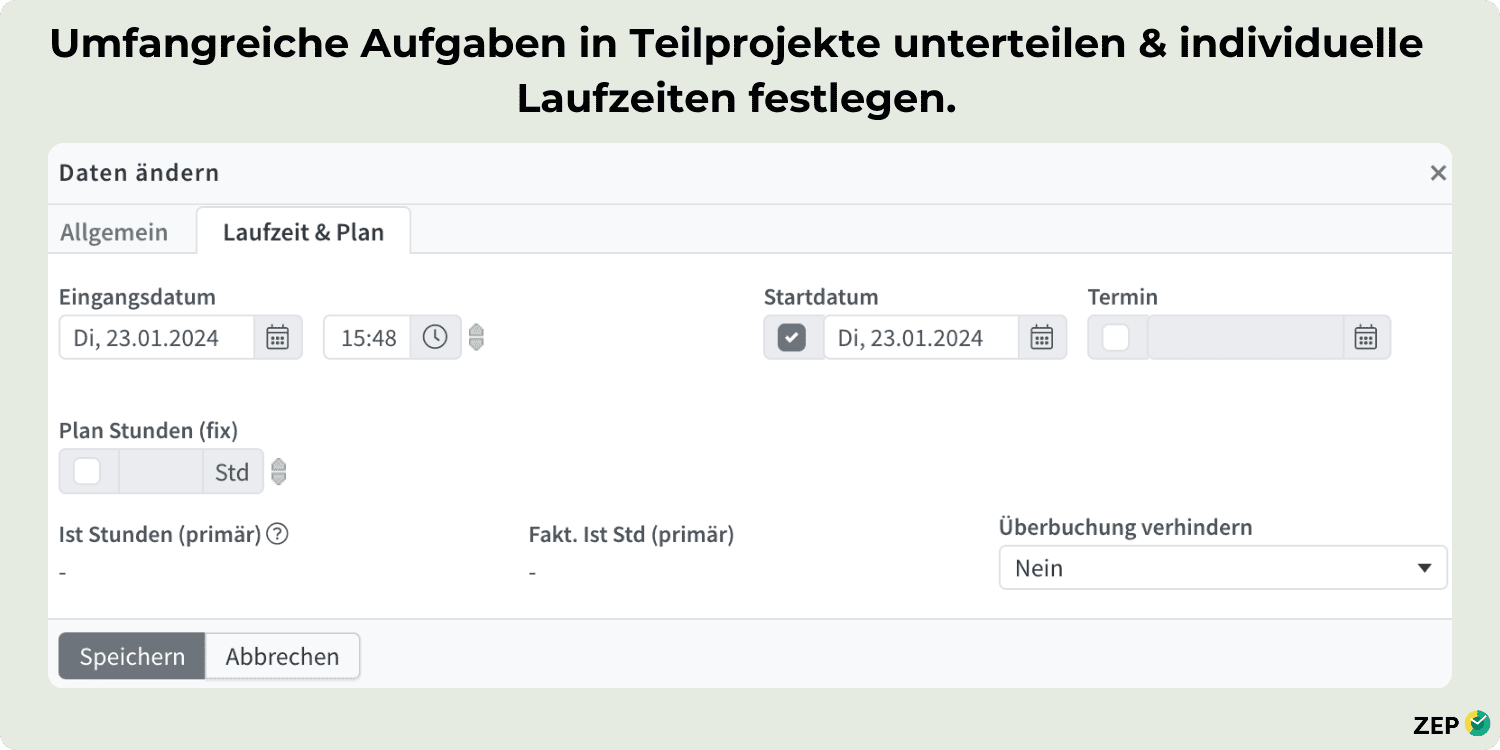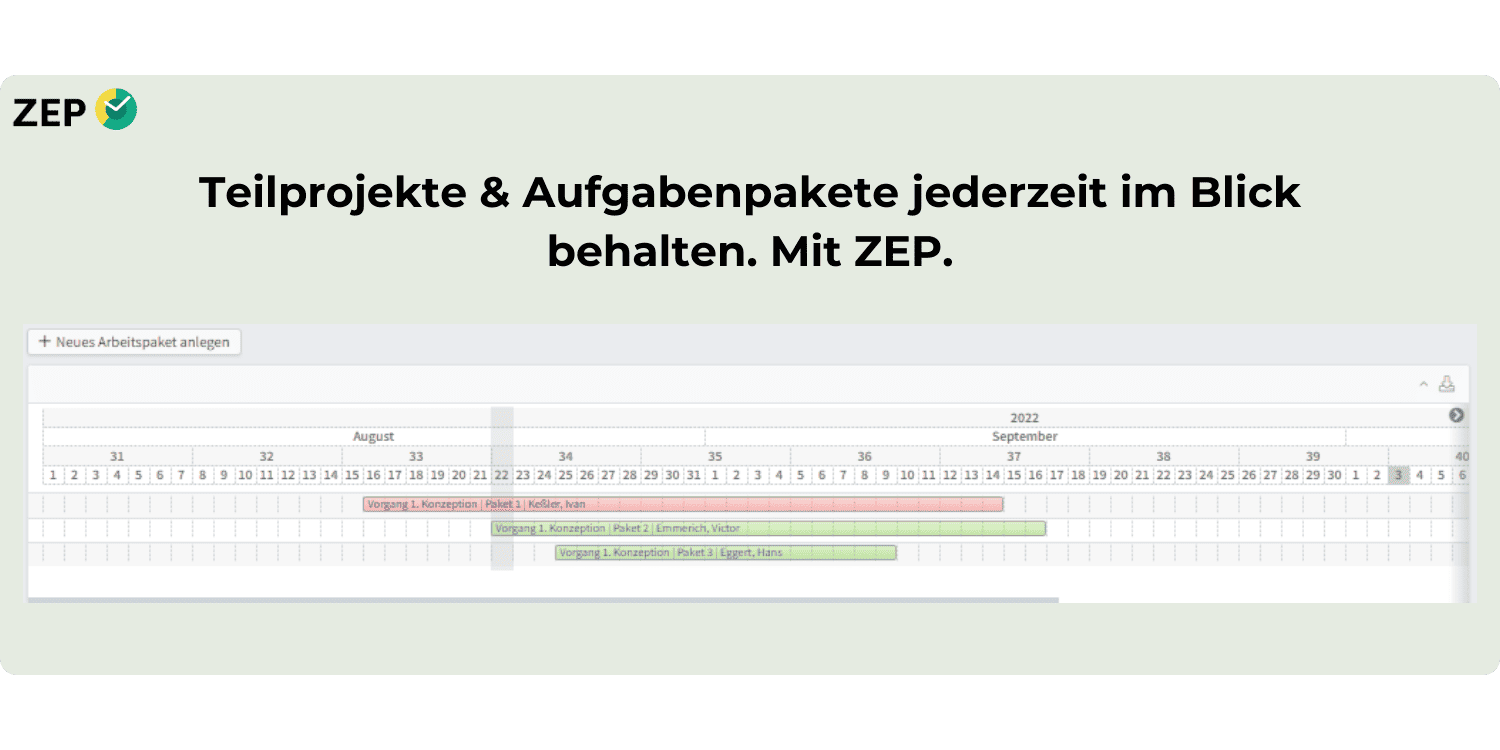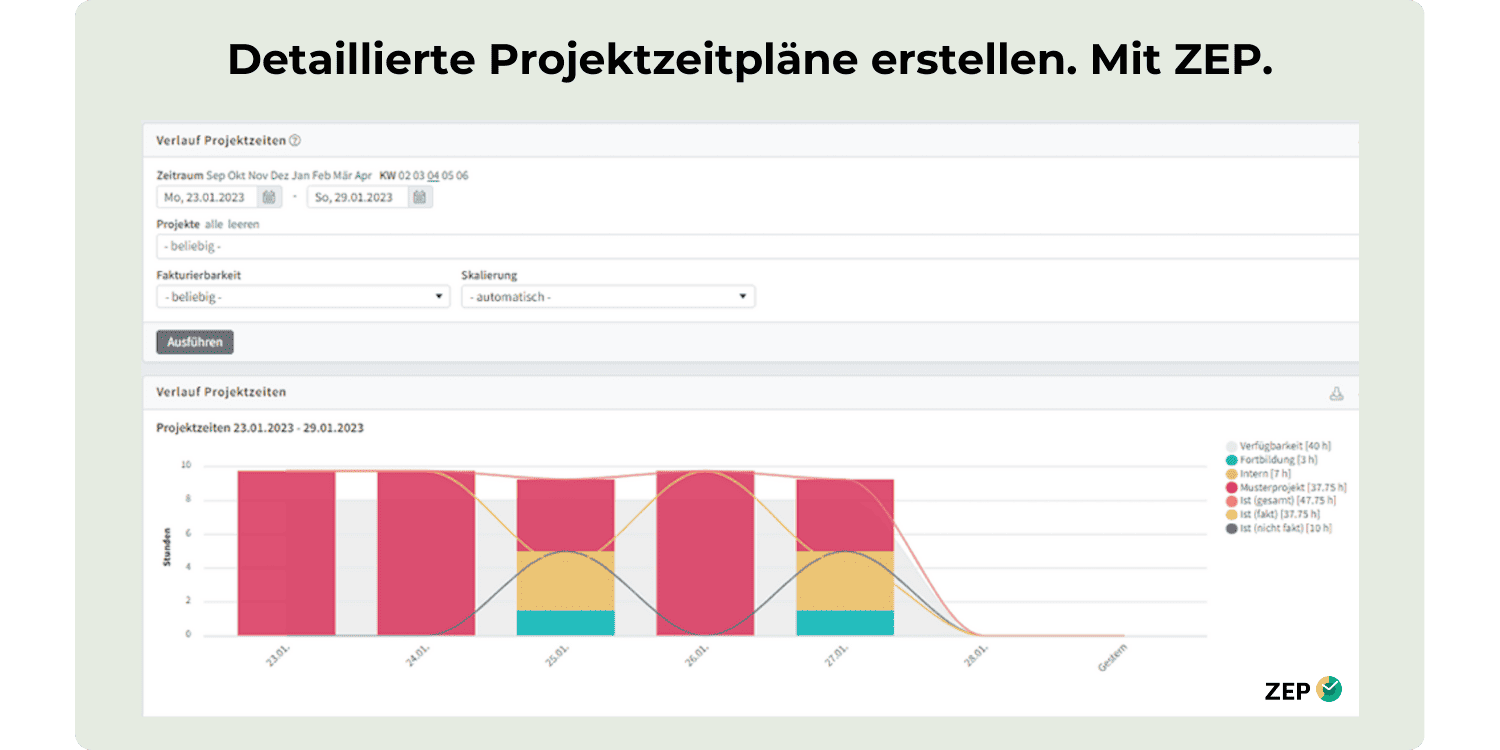
Viele nutzen sie, aber mit unterschiedlichem Erfolg: To-do-Listen sind zweifellos ein unverzichtbares Instrument im Projektmanagement, aber man muss die passende Methode finden. Die allseits bekannten Listen, die von nahezu jedem schon einmal erstellt wurden, bieten im beruflichen Kontext – insbesondere für Sie als Projektmanager – erheblichen Mehrwert. Sie dienen als effizientes Werkzeug, wenn es darum geht, einen umfangreichen Berg an wichtigen Aufgaben zu bewältigen und sicherzustellen, dass keine davon übersehen wird.
In einer To-do-Liste werden nicht nur alle anstehenden Aufgaben aufgeführt, sondern sie kann auch individuell an die spezifischen Anforderungen Ihrer Projekte angepasst werden. Dies sorgt für eine höhe Übersichtlichkeit und ermöglicht es Ihnen als Projektmanager, den Fortschritt jedes einzelnen Projektschrittes genau zu verfolgen.
Um eine übersichtliche To-do-Liste zu führen, stehen Ihnen verschiedene Methoden zur Verfügung – angefangen bei der grundlegenden bis hin zur komplexen Methode. Für Sie als Projektmanager bietet sich eine komplexere Methode an, da hierbei alle Projektaufgaben in Teilbereiche unterteilt werden und die benötigten Ressourcen sowie Stakeholders are listed. Dies ermöglicht Ihnen einen tiefgreifenden Einblick und umfassende Steuerungsmöglichkeiten.
Die entscheidende Frage lautet: Welche Vor- und Nachteile bieten To-do-Listen für ein effektives Projektmanagement? In diesem Blog erfahren Sie 5 hilfreiche Tipps, wie Sie mit Aufgabenlisten Ihre Projekte erfolgreicher gestalten.
Als Projektmanager wissen Sie um die entscheidende Bedeutung effektiven Zeitmanagements und einer klaren Organisationsstruktur in Ihrem Arbeitsumfeld. Eine To-do-Liste erweist sich als besonders hilfreich, da sie Unerledigtes aus dem Gedächtnis nimmt und Sie sich komplett auf die jeweils aktuelle Aufgabe konzentrieren können. Die klare Fokussierung auf eine Aufgabe ermöglicht es Ihnen und Ihrem Projektteam, diese effizient abzuschließen, bevor Sie die nächste in Angriff nehmen.
The creation of a clear organisational structure, combined with improved time planning and Prioritisation according to relevance and deadline, macht die To-do-Liste zu einem unverzichtbaren Werkzeug für Sie. Die Möglichkeit, den Status einzelner Projektschritte zu verfolgen und den Gesamtfortschritt stets im Blick zu behalten, motiviert das gesamte Team, die gesteckten Ziele zu erreichen.
Trotz der vielversprechenden Vorteile von To-do-Listen sollten Sie auch potenzielle Herausforderungen im Blick behalten. Insbesondere in Situationen, in denen die Zeitressourcen für ein Projekt bereits knapp bemessen sind, könnte das Erstellen einer To-do-Liste als zusätzlicher zeitlicher Aufwand wahrgenommen werden. Der resultierende Zeitdruck könnte zu unbewusstem oder sogar bewusstem Stress führen, was sich negativ auf die Leistung oder die Qualität auswirken kann. Bei anhaltendem Stress könnten weitere negative Konsequenzen – like burnout symptoms – auftreten.
Zusätzlich besteht die Möglichkeit, dass durch die To-do-Liste unrealistische Ziele gesetzt werden. Dies kann häufig darauf zurückgeführt werden, dass zu hohe Erwartungen an die eigene Leistungsfähigkeit oder die des Teams gestellt werden. Beim Durchgehen der Liste könnten unerledigte Aufgaben demotivierend wirken, während übersehen wird, was bereits erfolgreich erreicht und abgehakt wurde.
Wenn Sie feststellen, dass die Vorteile einer To-do-Liste für Ihren Projektalltag überwiegen, ist es nun entscheidend, die optimale Form einer solchen Liste für Ihre Bedürfnisse zu ermitteln. Zunächst sollten Sie wählen, ob eine analoge oder digitale Lösung besser zu Ihren Anforderungen passt. Analoge Varianten wären beispielsweise ein Notizbuch, Whiteboard oder handschriftliche Listen. Diese sind – sofern Ihr Projektteam gemeinsam an einem Ort arbeitet – für alle zugänglich. Außerdem prägt sich analog Geschriebenes besser im Gedächtnis ein. Der Nachteil an dieser Methode: Die Prioritäten können nicht so flexibel geändert werden, ohne dass es einen vermehrten Aufwand nach sich zieht. In der digitalen Welt können Sie Einträge einfach an eine andere Stelle schieben, ohne dabei viel Zeit zu verlieren. Bei der manuellen Variante müssten Sie diverse Punkte neu aufschreiben oder möglicherweise die gesamte To-do-Liste neu erstellen.
Die digitale Variante der To-do-Liste ist für alle Mitarbeiter in einem System zugänglich. Das bietet insbesondere dann einen enormen Vorteil, wenn Ihr Projektteam im Homeoffice oder an verschiedenen Standorten arbeitet. Mehr zum Thema standortübergreifende Projektarbeit können Sie hier nachlesen. Mit einer Software wie ZEP können Sie Ihre Projekte in einzelne Aufgabenpakete und Teilprojekte unterteilen und haben jederzeit im Blick, welche Aufgaben als nächstes anstehen.
To-do lists allow you to focus on one important resource in project management: time! With the ALPEN method put your individual to-dos in the right order:

Durch die Anwendung dieser Methode in Ihrem Zeitmanagement integrieren Sie auch die Entscheidungsfindung und Kontrolle in Ihre To-do-Listen. Sie priorisieren und treffen Entscheidungen darüber, welche Aufgaben wie, wann und von wem erledigt werden. Dabei wird auch ein Zeitraum für Puffer berücksichtigt, denn: Prioritäten können sich im Projektverlauf ändern! Obwohl die Nachkontrolle zusätzliche Zeit in Anspruch nimmt, spart sie im Gegenzug eine Korrekturschleife, wenn Sie Fehler vor der Abgabe eines Projektes erkennen.
Gerade bei umfangreichen Projektschritten kann es schwierig werden, den Überblick zu behalten und zu wissen, wo man überhaupt anfangen soll. Eine effektive Strategie besteht darin, komplexe Aufgaben in mehrere kleine Schritte aufzuteilen. So erhalten Sie eine bessere Struktur und klare Anhaltspunkte, wo und wann eine Aufgabe anzufangen ist.
In digitalen Lösungen wie ZEP kann dies beispielsweise durch die Einführung von Teilaufgaben innerhalb einer Hauptaufgabe umgesetzt werden. Mit dem Module Tickets, Tasks & To-dos unterteilen Sie Projekte in Einzelaufgaben für Ihr Team und können sogar Supportanfragen Ihrer Kunden direkt als Tickets in den Projektverlauf mit einbinden. Die Unterteilung der Aufgaben macht diese nicht nur machbarer für Ihr Team, sondern führt auch zu schnellen Erfolgen sowie einer verbesserten Übersicht, Konzentration und Ordnung in Ihrem Projektverlauf. Besonders praktisch ist die Möglichkeit, Teilaufgaben einzelnen Teammitgliedern zuzuweisen und individuelle Fristen festzulegen.

Ein häufiges Problem besteht dann, wenn Too many tasks in too little time erledigt werden müssen. Die Bewältigung einer großen Anzahl von Aufgaben, die ohnehin nicht an einem einzigen Tag erledigt werden können, kann Sie und Ihr Projektteam überfordern und zu Stress sowie Unzufriedenheit führen. Um die Anzahl der Aufgaben, die innerhalb eines Arbeitstages realistisch erledigt werden können, besser einzuschätzen, ist es ratsam, sie stets mit dem ungefähren Zeit- sowie Ressourcenaufwand einzuplanen. Holen Sie hierfür Ihre fachkundigen Projektmitarbeiter ins Boot und bitten Sie sie um Ihre Zeit- und Ressourcenschätzungen für Ihr Projekt. Oftmals können die betreffenden Mitarbeiter sehr gut einschätzen, wie lange sie für die jeweiligen Projektschritte benötigen.
Durch die geschätzte Zeitangabe für jeden Projektschritt erhalten Sie einen klaren Überblick darüber, wie viele Stunden Ihres Tages verplant sind. In digitalen Tools wie ZEP können Sie für jedes Teilprojekt und Aufgabenpaket eine voraussichtliche Zeitangabe hinterlegen.

Die nächste Abgabefrist steht bereits bevor, aber Sie haben den Projektschritt noch nicht erledigt? Setzen Sie sich zukünftig kürzere Abgabetermine und integrieren Sie somit einen Puffer in Ihre Projektplanung. Wenn Sie früher als geplant fertig sind, können Sie sich der nächsten Aufgabe widmen oder sich eine wohlverdiente Pause gönnen. Denn: Selbst die effektivste To-do-Liste kann frustrierend werden, wenn die Anzahl der Aufgaben nicht abnimmt oder sogar ständig neue To-dos hinzukommen. Daher ist es ratsam auf ausreichend Pufferzeiten zu achten. Da der Aufwand für Aufgaben oder Teilprojekte oft nicht exakt vorhersehbar ist, schaffen Sie ausreichend Spielraum, um nicht in Stress zu geraten!
Große und unliebsame Aufgaben werden gerne aufgeschoben und bleiben im Zweifel liegen. Wenn Sie jedoch mit der schwierigsten Aufgabe beginnen, steigt die Motivation für die übrigen Positionen auf Ihrer To-do-Liste. Warum? Dann haben Sie das Schlimmste bereits hinter sich – diese method is also Eat the Frog named.
Prokrastination kann einen erheblichen Zeitverlust verursachen, sodass jedes noch so gut durchdachte Zeitmanagement und jede noch so präzise aufgestellte To-do-Liste im Projektmanagement unter dieser Aufschieberitis leidet.
Digitale Notizen können Sie mithilfe geeigneter Tools optimal organisieren. Für einfache To-do-Listen genügen häufig Apps wie OneNote oder Microsoft. Wenn es jedoch um To-do-Listen mit direktem Bezug zu einzelnen Aufgaben geht, bietet Ihnen eine Project management software such as ZEP considerable added value.
Mit ZEP können Sie aus den Aufgaben oder Supportanfragen Ihrer Kunden direkt im Projekt eine Auflistung mit Bezug zur Priorität und Laufzeit erstellen – und die einzelnen Aufgaben unterschiedlichen Mitarbeitern in Ihrem Projektteam zuordnen. Durch die Verwendung des Moduls Planstunden können Sie Stunden und Leistungen im Voraus definieren, um eine professionelle und detaillierte Planung Ihrer Projekte zu ermöglichen. Dabei haben Sie die Wahl zwischen festen und dynamischen Planstunden, um Ihre Projekte nach Ihren individuellen Anforderungen zu steuern. So können Sie Ihren Projektverlauf in einzelne To-dos je Mitarbeiter unterteilen und behalten so von Anfang an jeden Projektschritt im Blick.

Der unbestreitbare Vorteil von To-do-Listen im Projektmanagement liegt in der Einfachheit ihrer Struktur. Wenn Sie daher die Übersicht über Ihr gesamtes Projekt – von der Planung über die Steuerung bis hin zum erfolgreichen Abschluss – durch To-do-Listen verstärken können, ist es durchaus ratsam, dies auch zu tun. Insbesondere dann, wenn Sie darauf achten, die Listen regelmäßig zu überprüfen, können sie sehr übersichtlich sein und zu Ihrem Projekterfolg beitragen. Dies gilt besonders dann, wenn Sie mit einer Software wie ZEP jeden größeren Projektschritt in Teilprojekte oder Arbeitspakete unterteilen. Auf diese Weise behalten Sie stets den Projektfortschritt im Blick.
Durch den Einsatz von ZEP können Sie darüber hinaus nicht nur die erledigten Aufgaben verfolgen, sondern auch die aufgewendete Arbeitszeit genau dokumentieren. So wie es seit dem BAG ruling from September 2022 Pflicht in Deutschland ist. Dies ermöglicht eine präzise Analyse der Arbeitszeiten, Identifizierung von Effizienzpotenzialen und eine Improved resource planning. Wenn Sie selbst herausfinden möchten, welche Möglichkeiten ZEP Ihnen für eine effektivere Projektsteuerung bietet, können Sie die Test the software for 30 days free of charge and without obligation.


Read article ↗

How can you strengthen your employer brand and attract the best talent? Discover 11 effective employer branding measures that will help you stand out from the competition and optimise your recruitment strategy.
Read article ↗
We answer your questions quickly & competently. Contact us by phone or email.
+49 7156 43623-0 or contact form